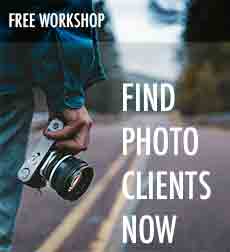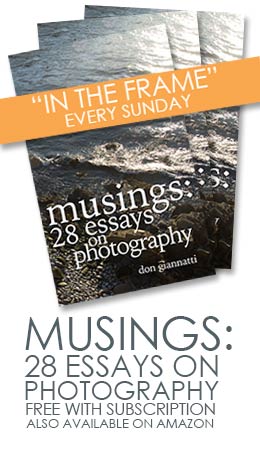
On assignment in West Texas, we decided that the local characters would give the well a lot more context.
Some Things Change, and Some Things Stay the Same
The constant, and rapidly changing landscape of photography continues unabated. Some may think of this as a very scary time to be in this business. They may be right… for them.
For me it is nearly a miraculous time to be in the photography business. From amazing gear to incredible innovation, it surrounds us every day. Perhaps it has become so ubiquitous that we don’t even see it when it is staring us in the face.
Change, baby. Everywhere.
I just read an article about some wedding guy going with Micro 4/3 and giving up his Nikons. Another article on what looks like a very cool 300WS studio flash with TTL for under $300. One photographer is shooting on a massive camera on handmade paper, while another is exploring Iceland with nothing but an iPhone. Both of them are getting images that are amazing.
The business part is changing as well. A recent study by web folk who study this sort of thing found that people respond more to big photographs on web pages than they do small. They also found that the cheap, crappy stock image is worse for the site than if there were no image at all.
What?
Photographs WORK? Photographs help sell stuff? Good photography matters?
Dang… who could have known?
Well, WE PHOTOGRAPHERS SURE AS HELL KNEW. Most competent ad agencies and graphic designers know. (Although there are a lot of graphic designers out there who have obviously bought into the free or dirt cheap RF stock junk. Too bad, losers.)
Now we are being backed up by non-photographers.
Our job now is to let our clients know how valuable a photograph is. Let them know that skimping on photography is a fast way to fewer sales and pointing them in the right direction is one of our purposes.
And we do that by doing the best work. Always the best work. No slacking, no hacking, no short cuts. We do the best work we can, and we do it over and over again.
We have to be able to show the client the difference between hack crap and good imagery. If we can’t, we may find that we are not making much headway.
I recently did a portfolio review with a photographer who was struggling a bit. He was having trouble connecting to his audience, and getting clients to say yes was becoming a very difficult endeavor. He was showing his book diligently, but getting no offers.
Problem was that while his book was that of an emerging photographer, the work ranged from ‘meh’ to good, and a few ‘greats’ thrown in almost as an afterthought.
When I remarked on is truly impressive images, he would say something like “yeah, I wasn’t sure about that one.” And he was sure about the mundane boring stuff?
The reality is that he was nearly totally cut off from the world of commercial photography. He took his cue from Model Mayhem, 500PX and G+.
When I asked him about some commercial shooters in his town (Google is your friend), he didn’t know who they were or what they did. He didn’t look at magazines or online publications. He was in a vacuum, and nobody can hear you scream in space.
When you show your work, you will be judged on more than the individual images, you will be judged by how well you understand the genre you are presenting. Is it within the genre of the client?
Wine bottles lit by umbrellas, ‘fashion models’ who are obviously 5’1”, car shots of last years models, food shots that look cold and stale, bad natural light still life work… all can lead to a single image bringing down the entire book.
The question becomes “why are they showing me this? Do they think this is cool? Can they not see it is horribly presented? How did they get all those other shots I wonder?”
Doubt. And doubt doesn’t close deals.
Some truths about this highly competitive business:
- Showing 10 great shots is far better than showing those same ten great shots mixed in with 20 other turkeys.
- You cannot edit your own work (mostly). Find someone to help you. A mentor or good friend who you TRUST.
- Do not be defensive, but do be strong. If three people you trust say ‘take it out’ then I would consider that some strong indication that while you may love it, it doesn’t ‘fit’ in your portfolio. Perhaps you need more of that kind to give it some context
- Make no excuses. Yeah, it was a crazy day and the MUA was late and it rained and three rabid wolves chased off the stylist, but once the hail stopped you were able to get a few shots in before the lightning destroyed the set, they look pretty good, all things considered. Bucky… on one cares about the things considered. Your ‘masterpiece’ under fire is a dud.
- Always be shooting. You should be adding new work to your site weekly if you are emerging as a shooter. That’s the time you have to DO the shots you want. Once the ball gets rolling, it may be tougher to find the time to do them. And they are VITAL to the ‘warm fuzzies’ for art directors and designers who may be following along.
The business is changing rapidly, but there are some things that are not changing… and showing top notch work, developing a body of work and keeping your work in front of people who buy is still as important, if not more important, than it has ever been.
So enjoy your new “mirrorless” or MFT, and dig into that Medium Format with gusto. Grab those new strobes and tell us all about them on the various social media… but remember that the words won’t count as much as the images you create with them.
If your client is looking for a technical writer who knows everything about every lens ever made, you may get a shot at it. But if they are looking for a photographer, you better make sure your portfolio is up to snuff, full of new work, and ready to be shown
That much will stay the same for a while longer. I’m sure.
I would love to hear your comments on the ways you are working to keep your portfolio up. Add them in the comments.





